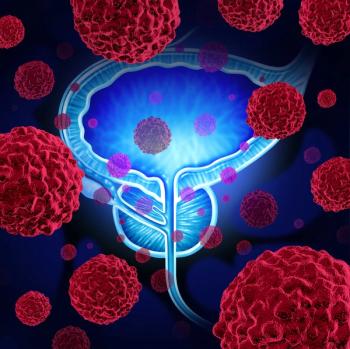
Low-Dose Lenalidomide Demonstrates Activity in Adolescents With Glioma
Treatment with 20 mg/m2 of lenalidomide in patients under 22 years old who have pilocytic astrocytomas and optic pathway gliomas appears to be safe and effective.
Lenalidomide (Revlimid) at a dose of 20 mg/m2 for 21 days every 28-day cycle appears to yield better tolerability and comparable activity vs a higher dose for pediatric patients with pilocytic astrocytomas and optic pathway gliomas for whom previous lines of treatment had failed, according to results published in The Journal of Clinical Oncology.
In arm A—the 20 mg/m2 dose arm—and arm B—the 115 mg/m2 dose—there were 4 objective responses observed, respectively. The estimated objective response rate (ORR) for each regimen was 12.9% (95% CI, 4.09%-22.6%). However, the number of patients who were early progressors was low.
“In this randomized phase 2 trial, we demonstrate that lenalidomide is a safe and effective therapy for children with pilocytic astrocytomas and optic pathway gliomas,” the study authors wrote. “Higher dosing does not offer additional benefit when compared with standard dosing, and standard dosing (regimen A) is better tolerated than the higher dosing (regimen B).”
A total of 74 patients enrolled in arm A (n = 37) or arm B (n = 37), and were evaluable for response. In arm A, the median number of treatment cycles given was 14 vs 11 in arm B.
Early disease progression was observed in 10 patients, including 6 in arm A and 4 in arm B; the probability of progression in arm A was 16.2% (95% CI, 9.2%-29.5%), and in arm B was 10.8% (95% CI, 5.48%-23.1%). Of note, 4 patients in arm B were removed from treatment during the first 6 months because of reasons besides disease progression.
The medium potential follow-up was 60.2 months. At 2 years, the event-free survival (EFS) was 46% (95% CI, 34%-57%) and the overall survival (OS) was 93% (95% CI, 84%-97%). For arm A, the EFS at 2 years was 43% (95% CI, 27%-58%) and the OS was 95% (95% CI, 80%-99%). In arm B, the 2-year EFS was 48% (95% CI, 31%-63%) and the OS was 92% (95% CI, 77%-97%).
Additionally, the time to ORR achievement in arm A varied between cycles, 6, 8, 11, and 13. For arm B it varied across cycles 4, 6, and 13.
The most common adverse effect was myelosuppression. Patients also experience grade 4 neutropenia in 2 patients in arm A and 12 in arm B. Discontinuation of therapy occurred because of the patient's best interest (n = 1), reasons not otherwise specified (n = 3), vision loss (n = 1), alternative therapy (n = 2), persistent diarrhea (n = 1), compliance (n = 1), and patient refusal (n = 6).
Patients were eligible for treatment if they were younger than 22 years old with the indicated disease who had relapsed, progressed, or become refractory to conventional therapy. This included at least 1 prior regimen that contained carboplatin. Patients also needed to have a body surface area of 0.4 m2 or greater because of the limitations of the capsule size, measurable residual disease, and Lansky/Karnofsky score of 60 or more.
“[Lenalidomide] may be a treatment option in this population, particularly since low-grade glioma is treated as a chronic disease, lenalidomide has a limited range of acute toxicities, and does not have the known risk of second malignancies associated with alkylator therapies. Further evaluation of its activity and underlying mechanisms of action in this population is warranted to best determine its role in the treatment of these patients,” the authors concluded.
Reference
Warren KE, Vezina G, Krailo M, et al. Phase II randomized trial of lenalidomide in children with pilocytic astrocytomas and optic pathway gliomas: a report from the children's oncology group. J Clin Oncol. Published online May 1, 2023. doi:10.1200/JCO.22.01777
Newsletter
Stay up to date on recent advances in the multidisciplinary approach to cancer.

























































































